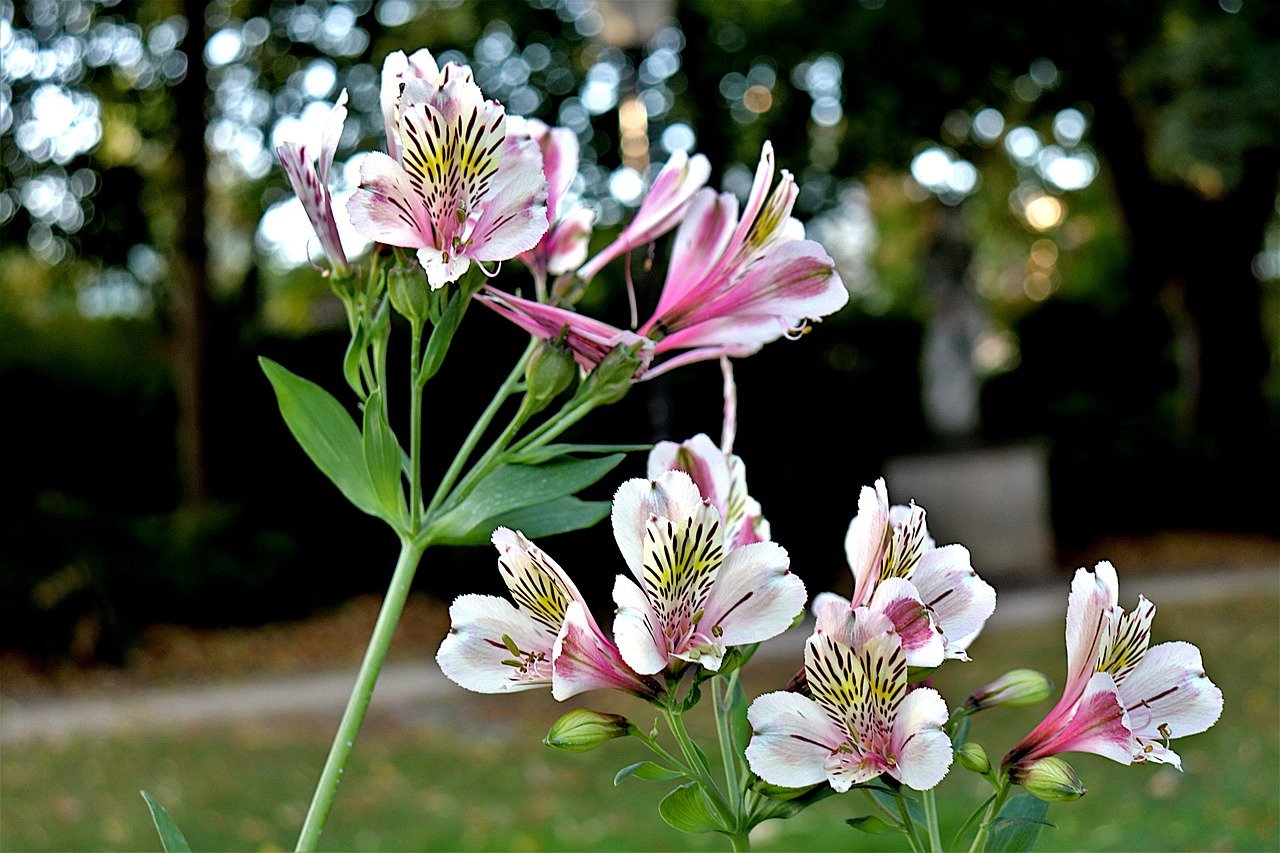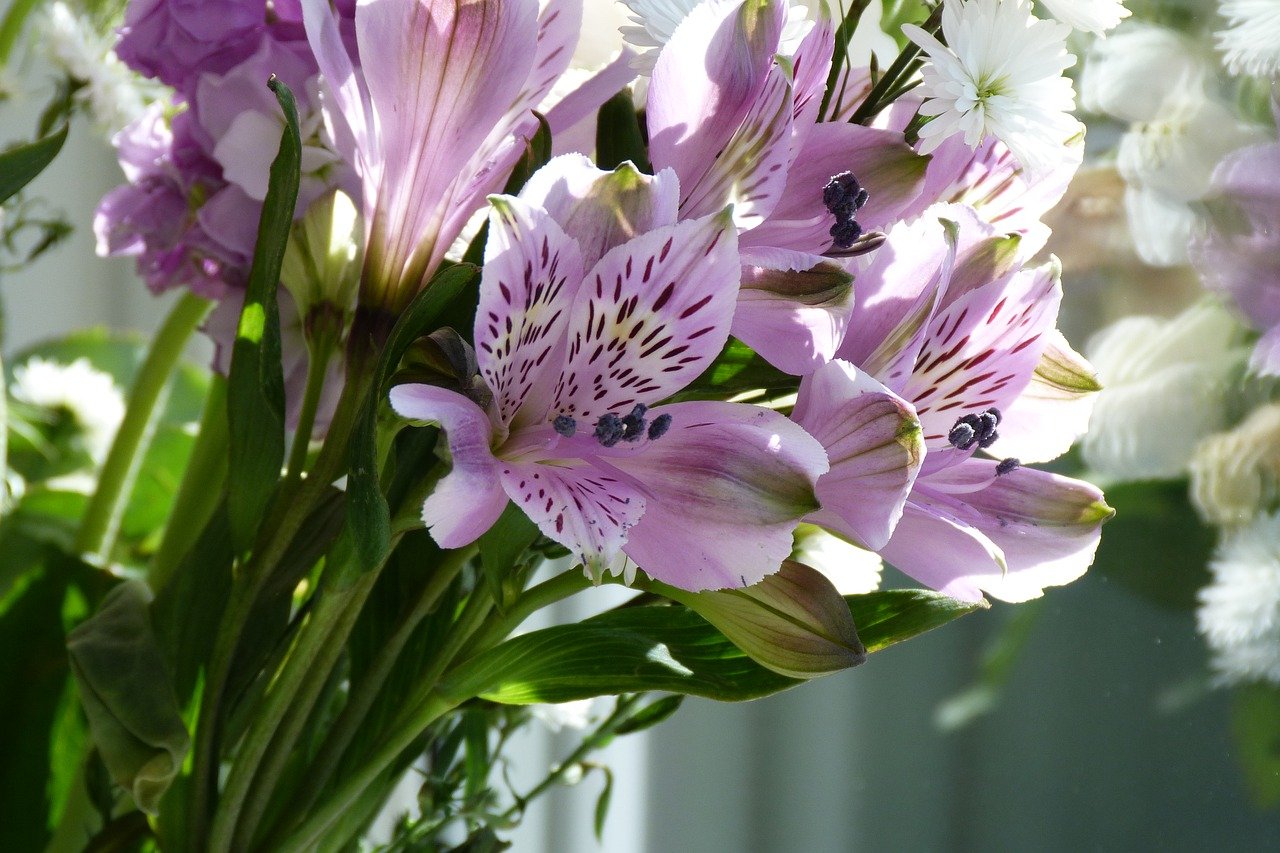When you replant Alstroemeria, it may be tempting to dig them up and check the progress – do not do this! You can also wait and see if they come up – but if you are seeing no growth at all then you might start to worry. Rather than sitting around waiting, or risking disturbing any growth below the soil, a much better idea is to work out “why are my Alstroemeria tubers not growing?” and discover how to make them come back to life.
I am here to help with this!
Why are my Alstroemeria tubers not growing

1. It takes time; be patient
If you haven’t seen any life from your newly planted tubers (here’s my guide on how to divide them), you may be tempted to dig away a little soil to check for life.
Don’t do this. It is very easy to accidentally kill a delicate little shoot, and it’s heart-breaking, especially if they have already started growing beneath the surface (yes, I speak from experience here!)
These guys take quite a long time to show their faces; it will be anywhere between 10 and 15 weeks before you see any new shoots. Mark the date that you planted them, and leave them well alone for around 4 months before you start to worry.
2. Make sure the soil is right
The type of soil they are planted in also has a very big effect on the growth of Alstroemeria. If you have planted them in heavy clay, this could explain why the tubers are not growing – Alstroemeria simply won’t tolerate heavy, clay filled soil.
It needs to have sandy, well draining soil that allows the roots plenty of space, and which prevents water sitting around in the soil. You can get away with medium to heavy soil, as long as you add some grit or manure, to help with the drainage and nutrients.
3. Lack of nutrients
Alstroemeria like a good dose of nutrients now and then. Prime their soil with a hearty filling of well rotted manure or compost at the start of the growing season, to give the tubers the extra boost they may nee to help them to grow really well.
4. Overwatering
You may be inadvertently watering your tubers too much. These plants do not like to be waterlogged, and it will cause them to develop rot and the tubers will never even sprout. Keep the soil moist, but do not over water it.
5. Temperature
Keep an eye on the temperature. If their environment is too humid, Alstroemeria tubers can develop rot and die, so if they are in a warm greenhouse then you should consider moving them to a cooler area.
6. Slugs and snails
In the very early stages, these beautiful pants are very attractive to slugs and snails. If you haven’t been keeping an eye on them, it is entirely possible that they did sprout, but got mown down by the slimy intruders known and hated by gardeners everywhere – make sure you up your slug protecting game, especially as your tubers first start to show their heads.
You can use fleece, or sawdust, or even beer traps to keep the slimy pests away – other gardeners swear by copper tape to keep their plants safe. If you feel like going down the chemical slug pellet route, make sure your slug pellets are child and wildlife friendly, and preferably organic.
7. Spacing the mulch
Although you should add mulch to the soil to give the new plants the bet chance in life, you must take care that you allow at least 2 inches of space between the mulch and the plants, otherwise the tubers may become too damp and start to rot.
Mulch away in the spring and autumn, and know that you are doing the best that you can for your baby plants – but take care with it, and make sure you keep tubers and mulch separate.
How to bring Alstroemeria tubers back to life

Alstroemeria can be a bit of a fussy plant, and it can be a little tricky to propagate them and encourage good growth. But, with a little bit of time and care, they can be brightening up your garden for years to come.
- If you have left your tubers in the ground and just left them to it, you may be worried that they might not survive. They can still thrive, however, with a little care and attention! These plants are native to South America, where temperatures can be extreme, so you shouldn’t have to worry about them too much.
- If you pack some good quality, warming, nutrient rich mulch around your plants, they may well surprise you. You can also keep them warm with sheep fleece or black plastic, to warm the soil and make the roots think that spring is on the way.
- Try to avoid watering the tubers too much, as this can cause them to rot and then they will not survive at all. You only really need to water when the soil looks dry, or it is a prolonged hot period.
- If you want a fail safe way to bring Alstroemeria tubers back to life, then dig up the tubers (gently and carefully, to avoid breaking those delicate roots), then place them in pots of good quality compost and keep them in a warm greenhouse to make sure they have the best start.
This video is quite long, but it is a comprehensive guide to growing Alstroemeria, and will show you the best way to make the most of your beautiful plants:
Final words
Alstroemeria is a beautiful flower, that will make your garden look truly spectacular and which will reward all your hard work and attention with gorgeous, graceful flowers. You may be worried about why are my Alstroemeria tubers not growing, but there are ways to save them, as you see.
Even if your tubers are not looking their best, you can still revive them and bring them back to life, and enjoy beautiful flowers for a long time to come.





